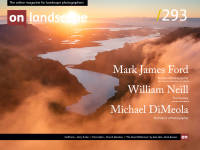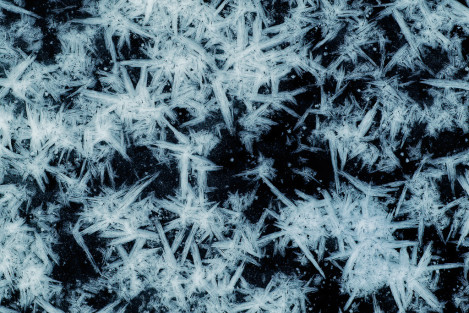Featured Photographer

Mark James Ford
Beauty is there, waiting to be found, in all things …
Striving for perfection at every point of the creative process, no aspect of the representation of an image is left to chance. Having always been fascinated by the colours and structures to be found in nature, my photography is the opportunity to show the awe-inspiring beauty of the minutiae and magnificentia of the terrestrial and celestial world as I perceive it. I have exhibited many times on the international stage and have published in books and magazines. I am Brand Ambassador for SIGMA Germany.

Michéla Griffith
In 2012 I paused by my local river and everything changed. I’ve moved away from what many expect photographs to be: my images deconstruct the literal and reimagine the subjective, reflecting the curiosity that water has inspired in my practice. Water has been my conduit: it has sharpened my vision, given me permission to experiment and continues to introduce me to new ways of seeing.
In this issue, we talk to Mark James Ford and feature some of his photography. I say some, as Mark has a diverse portfolio that includes panoramas, landscapes, flora, fauna and astrophotography. We’re concentrating on the abstract and macro, but you’ll find links to explore his other work in our feature. Mark has had a long standing interest in photography and a foot firmly in both art and science. Now living in Germany, he has access to some special places that motivate him beyond the local that the universality of macro can sometimes suggest through its removal of context.
Would you like to start by telling readers a little about yourself – where you grew up, what your early interests were, and what you went on to do? How did photography come into your life and what were your early images of, or about?
I was born in a suburb of Birmingham, England, in 1963 and grew up on the outer edge of a satellite town. In the one direction, school and everything to do with urban life; in the other, fields, woods, and a wonderful view across Staffordshire to the distant spires of Lichfield Cathedral some 15km away. Spending much of my free time - from an age where I was allowed to venture unattended and through my teenage years - in this semi-rural environment, I was exposed to and developed an appreciation of Nature and the changing of the seasons.
I have always been very creative. Between the ages of twelve to sixteen I spent many hours almost every evening in the school in an informal group that did nothing but draw, sketch, and paint exploring and developing ideas and methods continuously. I will be forever grateful to the teacher who gave us this opportunity and pushed us ever harder to understand what we were doing and why, and who was able to enthuse us so effectively. During this period, actually, at the age of twelve, I drew a series of 6 pictures of a single rose as it opened, matured, and eventually died. A process which mesmerised me completely and which introduced me to the idea of the ‘Beautiful Death’. This idea we pursued many times with other natural objects. It should probably then be no surprise that this aspect of Beauty has stayed with me all of my life, ultimately manifesting itself in my love of Autumn.
This interest in everything that is around me - what I see, what I can’t see, and what lies behind the beauty that is the natural world - led to a passion for the sciences and particularly chemistry, which I think is the most creative science. Unusually I guess, I pursued chemistry with just an equal passion as fine art, combining the two when, between the ages of 17-18, I was allowed to use a fully kitted out dark room (photography was not on the school curriculum). Teaching myself, I photographed and developed black and white film learning as many development techniques as I could and the actual meaning and execution of processes like ‘dodge,’ ‘burn’ and ‘mask’. The images themselves were, in retrospect, naive and immature, but sometimes the seeds of future work could be seen in pictures that did little more than show a simple structure or shape (man-made or natural) or a lone tree.


